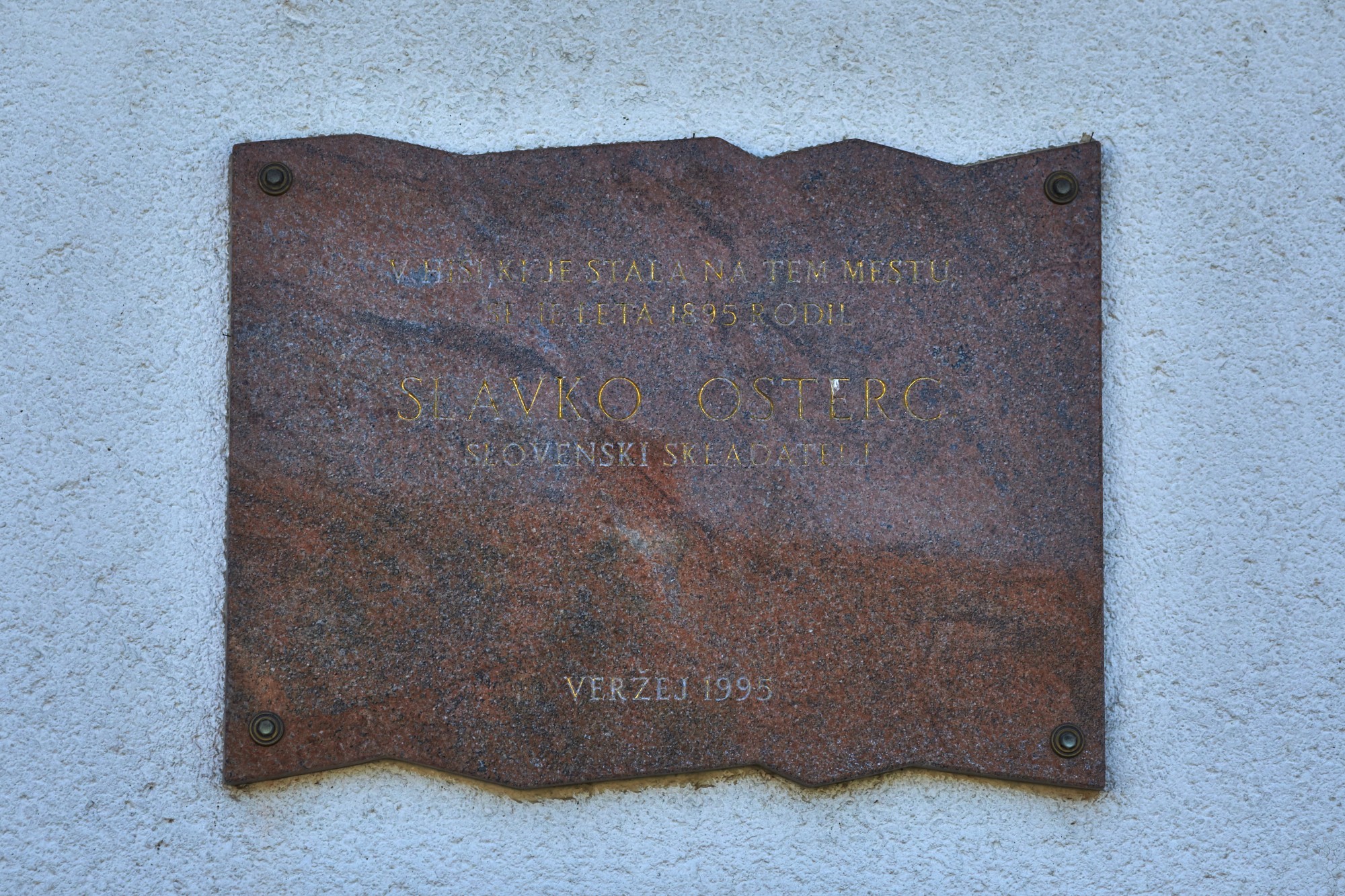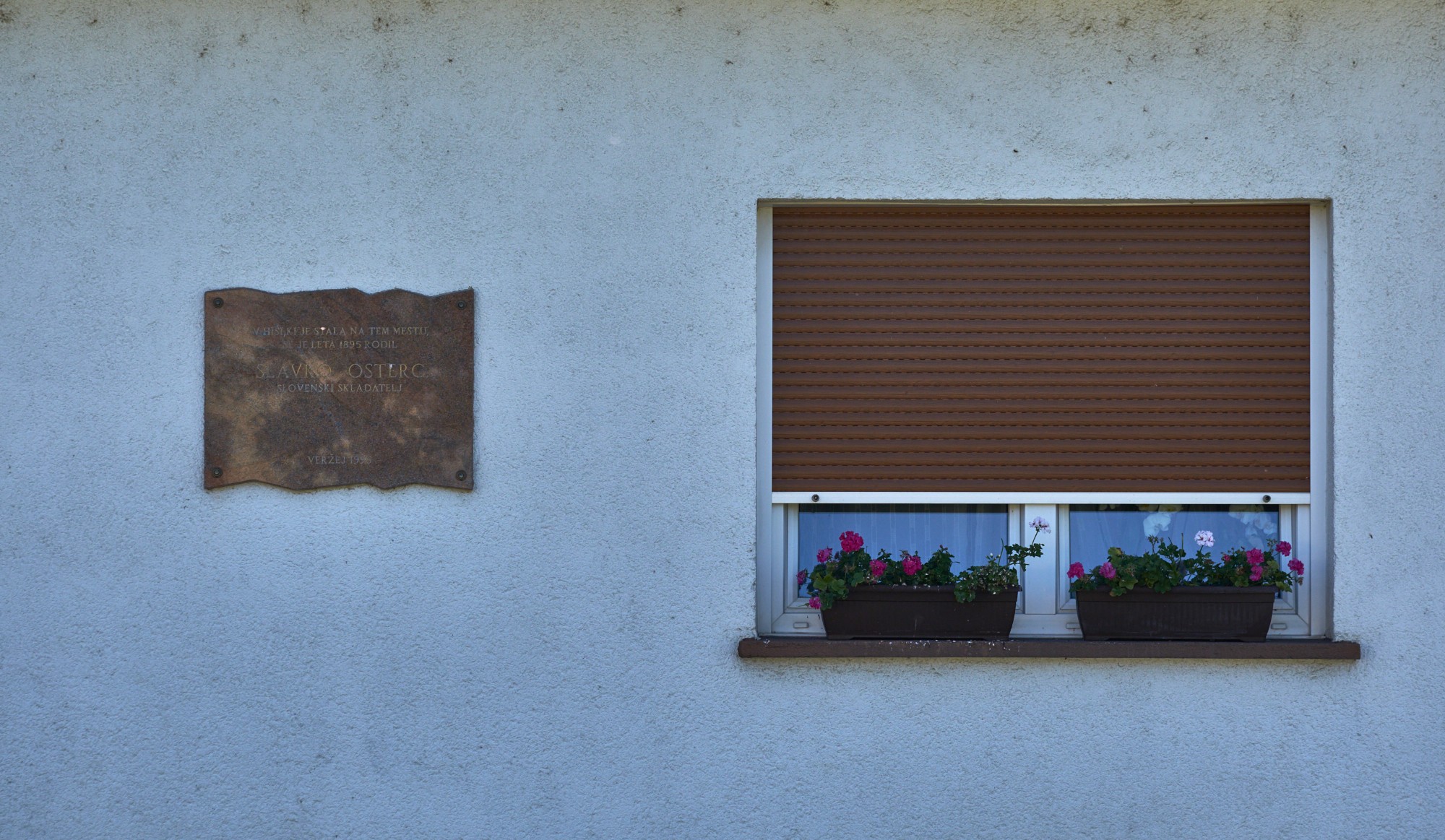The house of Slavko Osterc’s grandnephew is situated on the site where the composer’s birthplace used to stand. A memorial plaque was attached to the facade in 1995, in commemoration of the centennial of the birth of the composer.
Slavko Osterc
The artistic principles and advanced compositional concepts of Slavko Osterc (1895–1941) left a permanent mark on Slovenian art music. His musical aspirations had a significant impact on the development of aesthetic trends in music during the interwar period. Through his pedagogical work, Osterc implanted in his students, so-called “Ostercians”, the ambition to seek modernistic modes of expression. It was also his music criticism, writings that set high standards for the moulding of an original national music idiom, that influenced the compositional and music-performance styles of his contemporaries. Osterc encouraged composers to write, on a bigger scale, potent works that would assert a style, that of a period, a nation, a movement or individual, and thereby surpass the music, predominantly for voice, aimed at affirming national identity in the 19th century.
Initially a self-taught student of composition, Osterc engaged in further studies in 1925, an important landmark in his musical career. For two years, he attended the Prague Conservatory, studying under the tutelage of Alois Hába and Karel Boleslav Jirák, during which period his style changed under the influences of modernism, primarily absorbing elements of expressionism. Notably, he is credited with imparting these progressive artistic tendencies, which included both atonality and quarter-tone syntax, to the younger generation of composers, first as a professor at the Ljubljana Conservatory and then at the Academy of Music, where he remained until his death. The first composers to adopt the new compositional principles of expressionism were Marijan Lipovšek, Primož Ramovš, Pavel Šivic and Danilo Švara, artists who placed Slovenian music creativity in the context of European currents of the time.
Osterc’s idiosyncratic musical idiom, deriving inspiration from the polyphonically structured musical texture of the neo-baroque as well as neoclassicism and expressionism, was modelled after the works of Arnold Schoenberg, Igor Stravinsky and Paul Hindemith. One of Osterc’s best-known compositions is the Adagio from Suita za godala (Suite for Strings). His body of work comprises several orchestral and chamber pieces, three one-act operas, the ballet Iluzije (Illusions), a cantata Krst pri Savici (The Baptism at the Savica Fall) and the particularly valued Suita za orkester (Suite for Orchestra), a typical example of neo-baroque motor rhythm and polyphonic figurations.
Although, in keeping with the times, the composer abandoned the aesthetic of the romantic subject, the turning in upon the self and preoccupation with individuality, and tended to employ atonality (Silhuete za godalni kvartet, Silhouettes for a String Quartet, 1928, and Štiri Gradnikove pesmi za kontraalt in godalni kvartet, Four Poems by Gradnik for Contralto and String Quartet, 1929), he nevertheless remained faithful to traditional diatonic tonality by occasionally regressing into neoclassicism. Osterc’s artistic endeavours were received with disapproval by his fellow composers who, at the time, adhered to impressionism and were exponents of late romanticism, which in Slovenia was late to emerge, e.g. Lucijan Marija Škerjanc.
The international prominence of Slavko Osterc was confirmed by his election to the Executive Committee of the International Society for Contemporary Music (ISCM), a forum through which the composer’s music became known to the world by being performed in Prague, Florence, London and Warsaw. His extensive correspondence with international musicians from around the world, including London, Warsaw and Buenos Aires, is housed by the National and University Library in Ljubljana.
Since 1963, the Slavko Osterc Memorial Festival has been held on the last Saturday in May in the composer’s birthplace, Veržej.
Maia Juvanc


